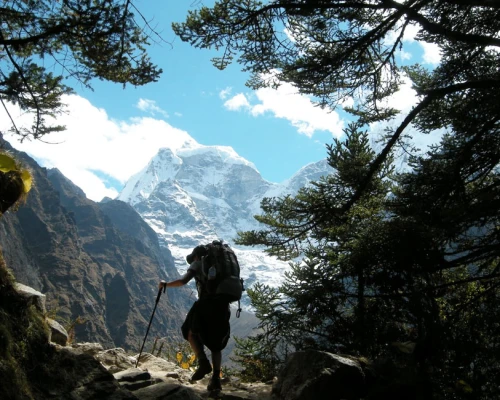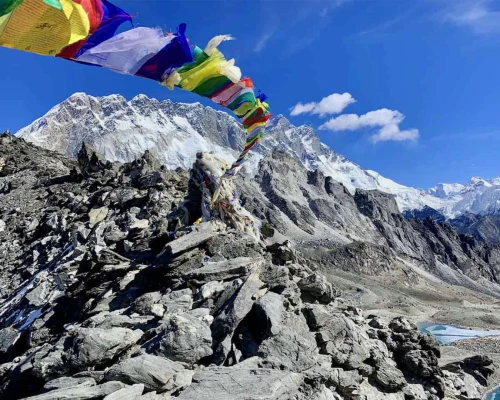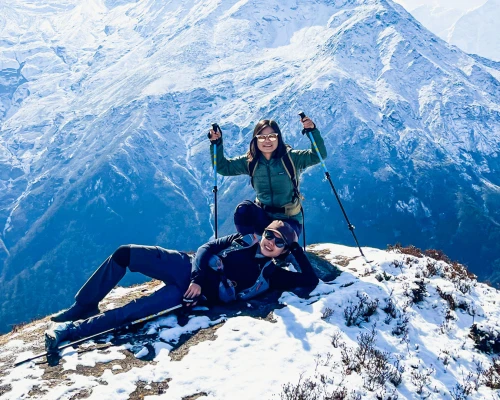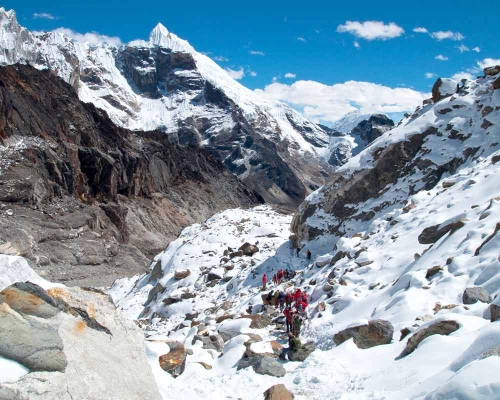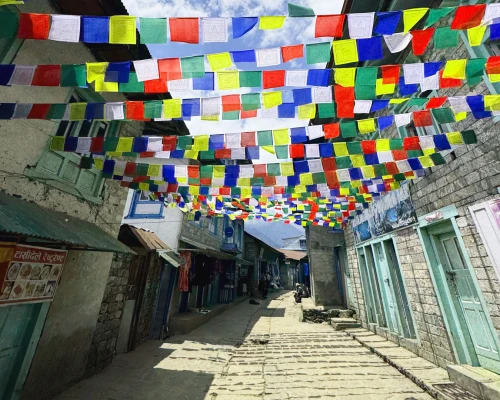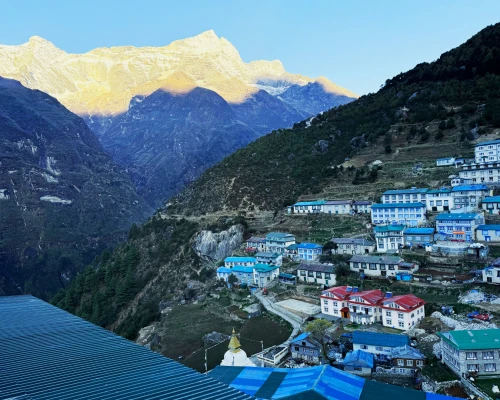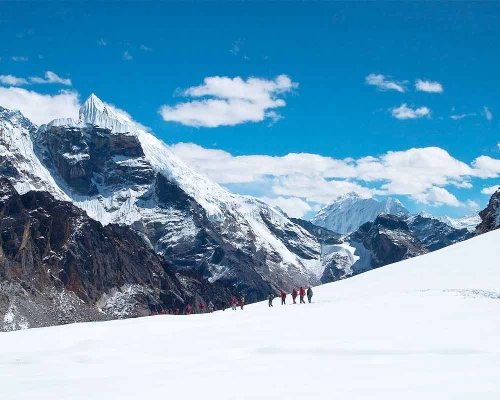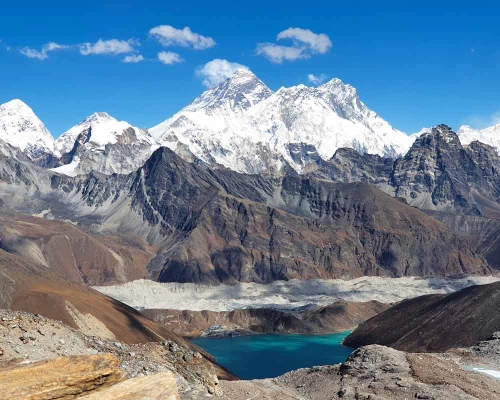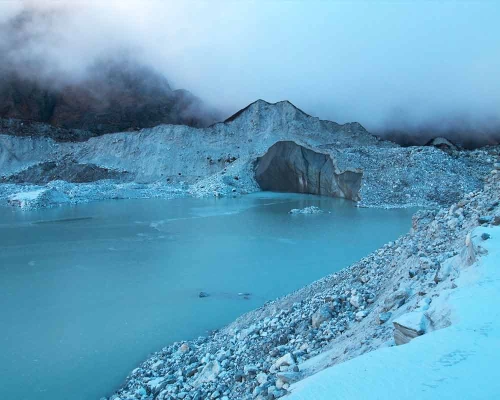Embark on an epic adventure with the Everest Three Passes Trek, the toughest and most exhilarating journey in the Everest region of Nepal! Conquer three challenging high mountain passes: Cho La Pass (17,782 feet), Renjo La Pass (17,520 feet), and Kongma La Pass (18,159 feet).
This exclusive trek goes beyond the ordinary – it's a golden opportunity to witness the breathtaking beauty of Mount Everest (29,029 feet) while navigating through remote villages, lush forests, and high-altitude valleys. Bid farewell to overcrowded trails and opt for the Everest Three Passes Trek, a top-tier alternative designed for seasoned trekkers boasting excellent physical fitness.
Elevate your senses with sweeping panoramic views of the renowned Himalayas and the exotic Gokyo Valley. This isn't just a trek; it's an unforgettable experience that will leave an indelible mark on your heart. Seize the chance to immerse yourself in the thrill and beauty of the Everest Three Passes Trek – your gateway to a life-changing adventure is right here!
Major Attraction of Everest Three Passes Trek
The Everest Three Passes Trek boasts its main allure – an awe-inspiring panorama featuring some of the world's highest peaks. Your journey unfolds as you venture into the exotic Gokyo Valley, revealing a stunning lake that leads the way to the challenging Cho La Pass. Nestled in the Khumbu Valley, Cho La stands tall at an elevation of 5,420 meters, offering an unparalleled experience for seasoned trekkers.
En route to Cho La, you'll traverse the magnificent Ngozumpa Glacier, adding a touch of adventure to your trek. The trail seamlessly converges with the renowned Everest Base Camp route in the east, creating a blend of classic and challenging terrains for an unforgettable trekking experience.
Renjo La Pass (5,340 meters/17,520 feet)
Discover the serenity and breathtaking beauty of Renjo La Pass (5,340 meters/17,520 feet), a gem along the Everest Three Passes Trek in Nepal. Nestled in the Khumbu region, this pass stands out as one of the most scenic and tranquil sections of the trek, serving as a vital link between the picturesque villages of Thame and Gokyo.
As you traverse the trail, be prepared to be enchanted by the charm of beautiful alpine meadows, dense forests, and quaint traditional villages, providing an intimate glimpse into the local culture and way of life. The ascent culminates at the pass's zenith, where trekkers are generously rewarded with awe-inspiring views of the surrounding peaks, including the majestic Mount Everest and other Himalayan giants.
The descent on the other side of the pass unveils a captivating valley, offering an opportunity to explore the Khumbu region and engage with the rich Sherpa cultures. Renjo La Pass promises not only a physical challenge but a cultural and visual feast, making it a highlight of the Everest Three Passes Trek.
Cho la pass (5,420 meters/17,782 feet)
Ascend to new heights at Cho La Pass (5,420 meters/17,782 feet), a pinnacle of the Everest Three Passes Trek in Nepal. Situated in the Khumbu region, this pass stands as one of the triumvirate of high mountain passes, forging a crucial link between the enchanting Gokyo Valley and the iconic Everest Base Camp.
Cho La Pass treats trekkers to unparalleled views of the surrounding peaks, with the majestic Mount Everest commanding the horizon. Undertaking this pass is no small feat; it demands steep climbs and glacier crossings, presenting a physically demanding yet ultimately rewarding adventure.
Upon conquering Cho La Pass, trekkers bask in a profound sense of achievement, surrounded by a panoramic spectacle of the Himalayas. The descent on the other side opens up a new valley, beckoning exploration and offering a chance to immerse oneself in the unique culture and traditions of the region. Cho La Pass is not just a geographical junction; it's a gateway to both physical and cultural discovery, making it a pivotal highlight of the Everest Three Passes Trek.
Kongma la Pass (5,535 meters/18,159 feet)
Prepare for the ultimate challenge at Kongma La Pass (5,535 meters/18,159 feet), recognized as one of the Everest Three Passes Trek's most demanding and strenuous sections in Nepal. Nestled in the Khumbu region near the vibrant town of Namche Bazaar, this pass serves as a vital link between the Chhukhung Valley and the Gorak Shep area.
Embarking on the Kongma La Pass trail is a test of endurance, involving steep ascents and descents, glacier crossings, and navigating rugged terrain. Despite the formidable obstacles, trekkers are generously rewarded with awe-inspiring views of the surrounding peaks, with the majestic Mount Everest dominating the panorama.
Standing triumphantly at the pinnacle of Kongma La Pass, trekkers revel in a profound sense of achievement, surrounded by a sweeping, panoramic view of the Himalayas. This pass is more than a physical challenge; it's a gateway to a breathtaking vista and a testament to the indomitable spirit of adventure. Prepare to conquer Kongma La Pass – where achievement meets the magnificence of the Himalayas.
Essential Considerations Before Embarking on the Everest Three Passes Trek
Embarking on the Everest Three Passes Trek is a thrilling adventure, but careful planning is key to ensuring a safe and enjoyable experience. Here are crucial factors to consider before setting out:
Physical Fitness: The trek is demanding, requiring a high level of physical fitness. Ensure you are in good health and have the stamina to hike for several hours a day at high altitudes.
Altitude Sickness: With the trek reaching high altitudes, altitude sickness is a serious concern. Proper acclimatization is essential, and recognizing symptoms promptly is crucial for your well-being.
Weather and Season: Optimal trekking periods are late September to early December and late March to early June. Be aware of weather conditions and potential risks associated with the monsoon season.
Travel Insurance: Himalayan trekking necessitates comprehensive travel insurance. Ensure your coverage includes emergency evacuation, medical expenses, and personal liability to safeguard against unforeseen challenges.
Permits and Entry Fees: Obtain necessary permits and pay entry fees, including the TIMS card and Sagarmatha National Park Permit. Ensure all paperwork is acquired in advance and carried with you throughout the trek.
Equipment and Gear: Quality equipment is paramount for a secure and comfortable trek. Pack appropriate clothing, footwear, and camping gear, ensuring everything meets the requirements for the challenging terrain.
Start on your Everest Three Passes adventure with confidence, equipped with the knowledge and preparations necessary for a memorable and safe journey.
Navigating the Challenges of the Everest Three Passes Trek
Take off on the Everest Three Passes Trek presents formidable challenges that demand careful consideration and preparation:
Chola's Slippery Ascent: Ascending Chola is a physically demanding task, requiring the use of crampons to tackle the slippery terrain. This segment of the trek poses a unique set of challenges that test trekkers' skills and endurance.
Kongma La Pass Altitude: Positioned at an imposing altitude of 5,535 meters (18,160 feet) between Chukhung and Lobuche villages, Kongma La Pass is the highest among the three passes. The thin air and steep ascent add to the physical strain, making it a noteworthy feat.
Winter Hardships at Renjo La Pass: Situated in the Khumbu Valley at 5,360 meters (17,585 feet), Renjo La Pass stands as a formidable obstacle. The path leading to it is exceptionally challenging, and tackling it during winter adds an extra layer of difficulty, requiring trekkers to navigate harsh conditions.
Traversing these passes demands not only physical prowess but also mental fortitude. The Everest Three Passes Trek is an expedition that pushes the limits, offering a true test of determination and resilience in the face of nature's challenges.
Prime Seasons for the Everest Three Passes Trek
Everest Three Passes trek demands strategic timing, and the Spring and Autumn seasons stand out for a variety of reasons, catering specifically to the seasoned trekking community.
1. Favorable Weather Conditions: During Spring (March, April, and May) and Autumn (September, October, and November), the climate is relatively stable and offers warm, sunny days. This weather creates ideal conditions for a challenging trek, allowing seasoned trekkers to navigate the demanding terrain with a greater sense of comfort and safety.
2. Clear Mountain Views: These seasons provide optimal visibility, allowing trekkers to revel in the panoramic views of the towering peaks, including the iconic Mount Everest. The crisp, clear skies during Spring and Autumn enhance the overall trekking experience, making it a visually stunning journey.
3. Temperature Comfort: The temperatures during these seasons strike a balance between warmth during the day and coolness in the evenings. This equilibrium is particularly beneficial for trekkers navigating various altitudes, ensuring a comfortable and manageable trekking environment.
4. Minimal Weather-Related Risks: Unlike the monsoon season and harsh winter conditions, Spring and Autumn bring fewer weather-related risks. Reduced chances of precipitation and milder temperatures contribute to a safer trekking experience, aligning with the preferences and expectations of experienced trekkers.
Note: Selecting Spring or Autumn for the Everest Three Passes trek ensures an optimal blend of weather conditions, clear mountain views, comfortable temperatures, and a reduced risk of adverse weather events. For those seeking a challenging yet rewarding trekking adventure, these seasons present the perfect window of opportunity.
Food During Everest Three Passes Trek
Concerning sustenance, a variety of timely and nourishing meals will be supplied throughout the trek. The primary and, in some instances, optimal food offerings include toast or chapati, eggs, potatoes, porridge, fried Mars Bars, and tea or coffee for breakfast. For lunch, a selection of rice, lentil soup, curried potatoes with vegetables, greens, and papad will be provided. Dinners will consist of lighter fare to maintain a balanced diet without compromising health.
It is recommended to steer clear of Western-style meals like burgers, pizzas, oily foods, as well as tobacco and alcohol during the trek. This cautious approach aims to uphold the health and well-being of trekkers, ensuring that dietary choices align with the physical demands of the journey. Opting for locally provided meals not only enhances the overall trekking experience but also contributes to maintaining optimal health conditions throughout the expedition.
Permits and Regulations of Everest Three Passes Trek
On your Everest Three Passes adventure with Nepal Trek Adventures, where we prioritize your convenience and peace of mind. We understand the importance of permits for a smooth and hassle-free trek, and that's why we take care of all the necessary paperwork on your behalf.
When you choose Nepal Trek Adventures for your Everest Three Passes Trek, rest assured that we handle the entire permit process, including:
TIMS Permit: We ensure you have the required Trekkers' Information Management System (TIMS) permit, an essential document for tracking and managing trekkers' information to enhance safety.
Sagarmatha National Park Permit: Your entry into the stunning Sagarmatha National Park is seamless with our assistance. We take care of obtaining the Sagarmatha National Park permit, contributing to the conservation efforts in the region.
Our goal is to provide you with a worry-free trekking experience, allowing you to focus on the breathtaking landscapes and the challenges of the Everest Three Passes Trek. Let Nepal Trek Adventures be your reliable partner, ensuring all permits are in place for an unforgettable and hassle-free journey.



